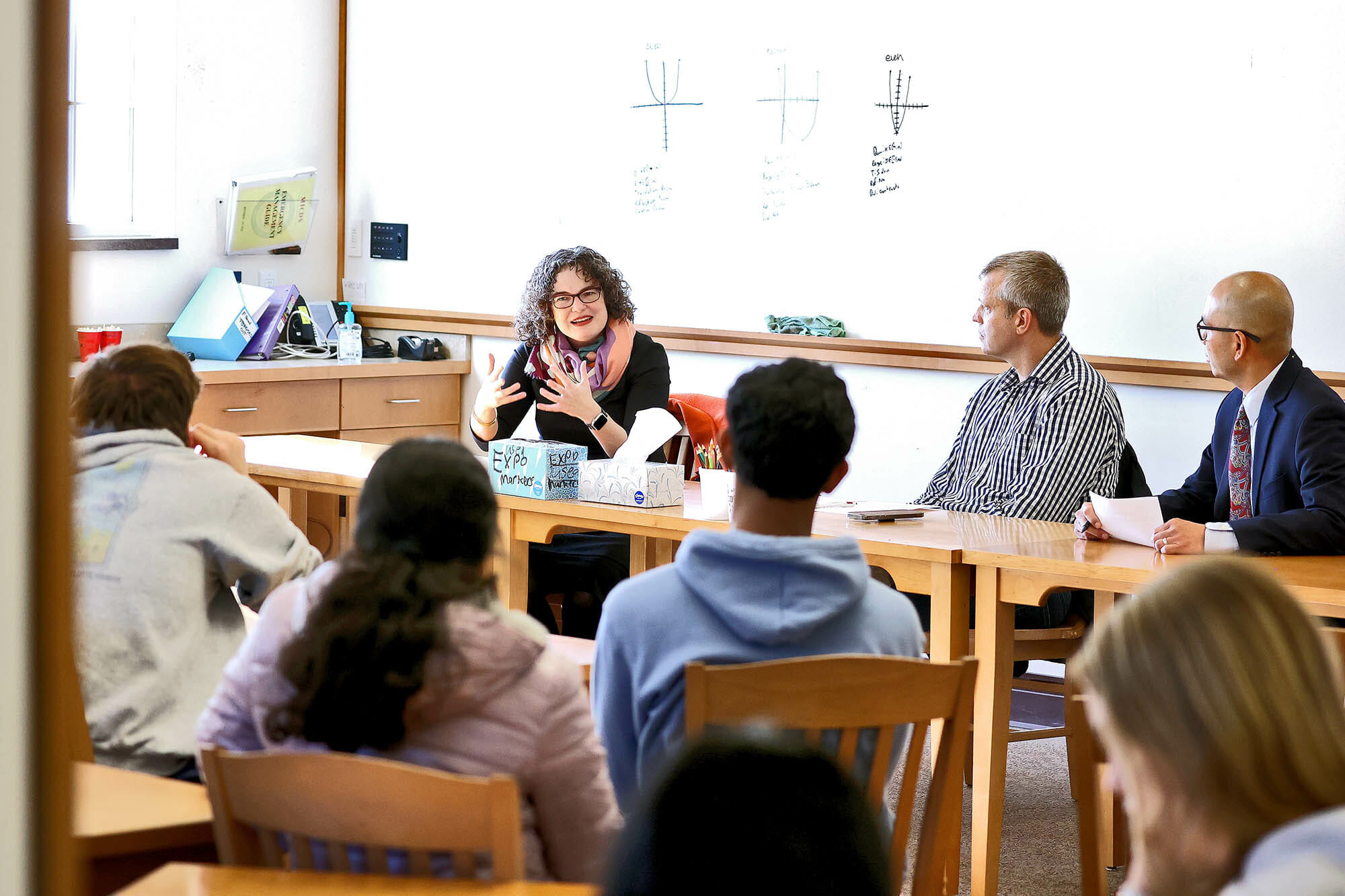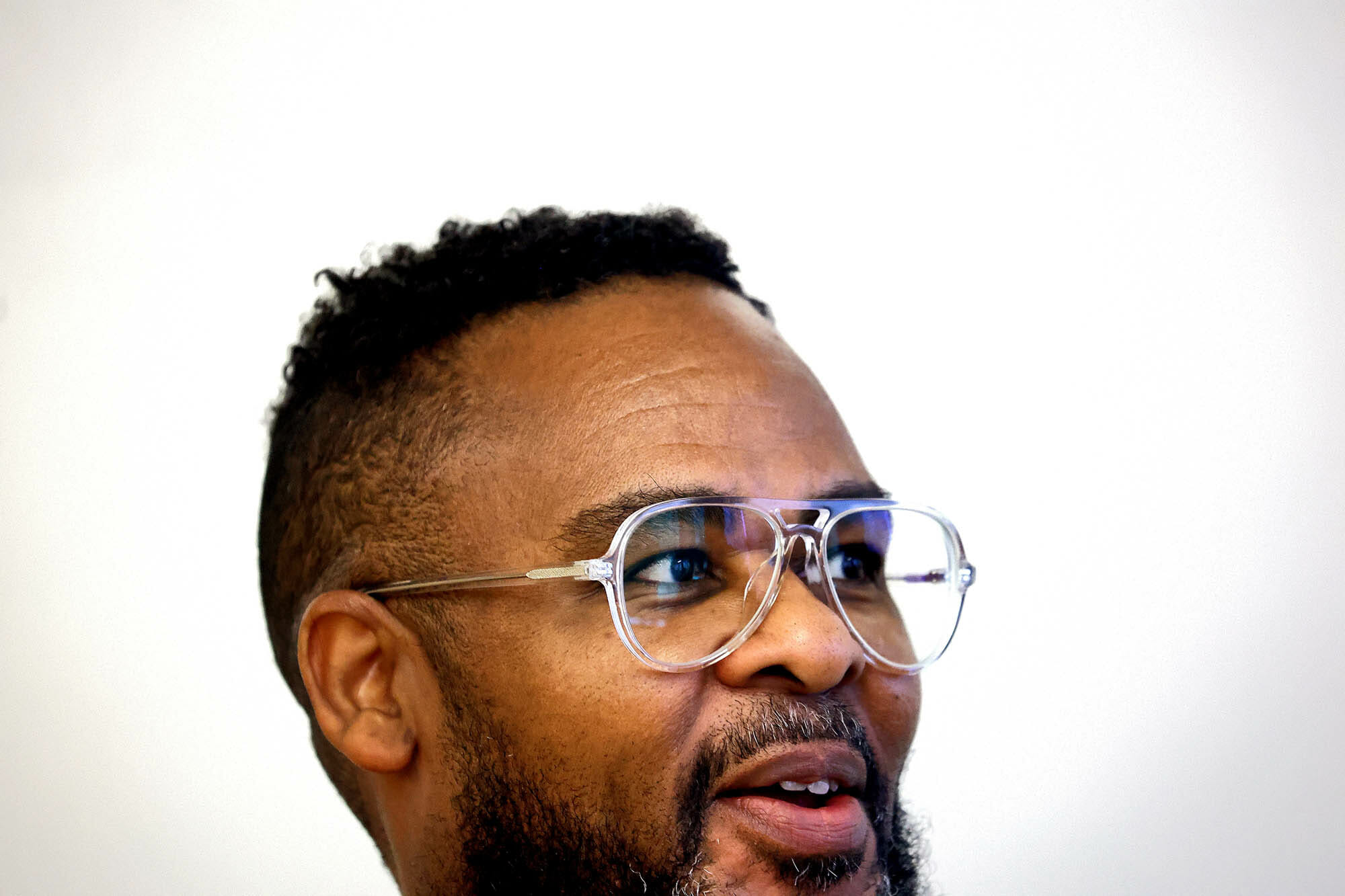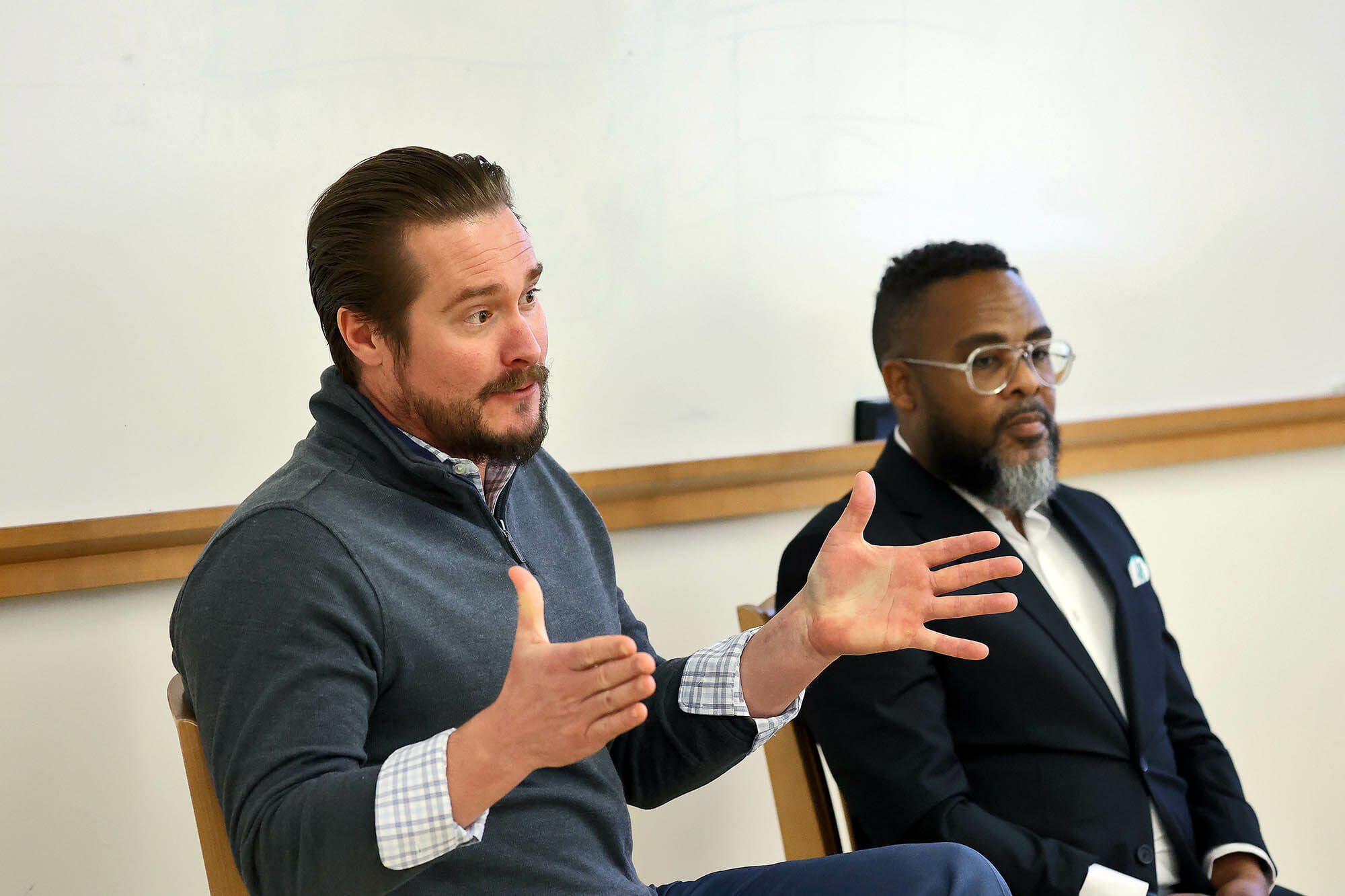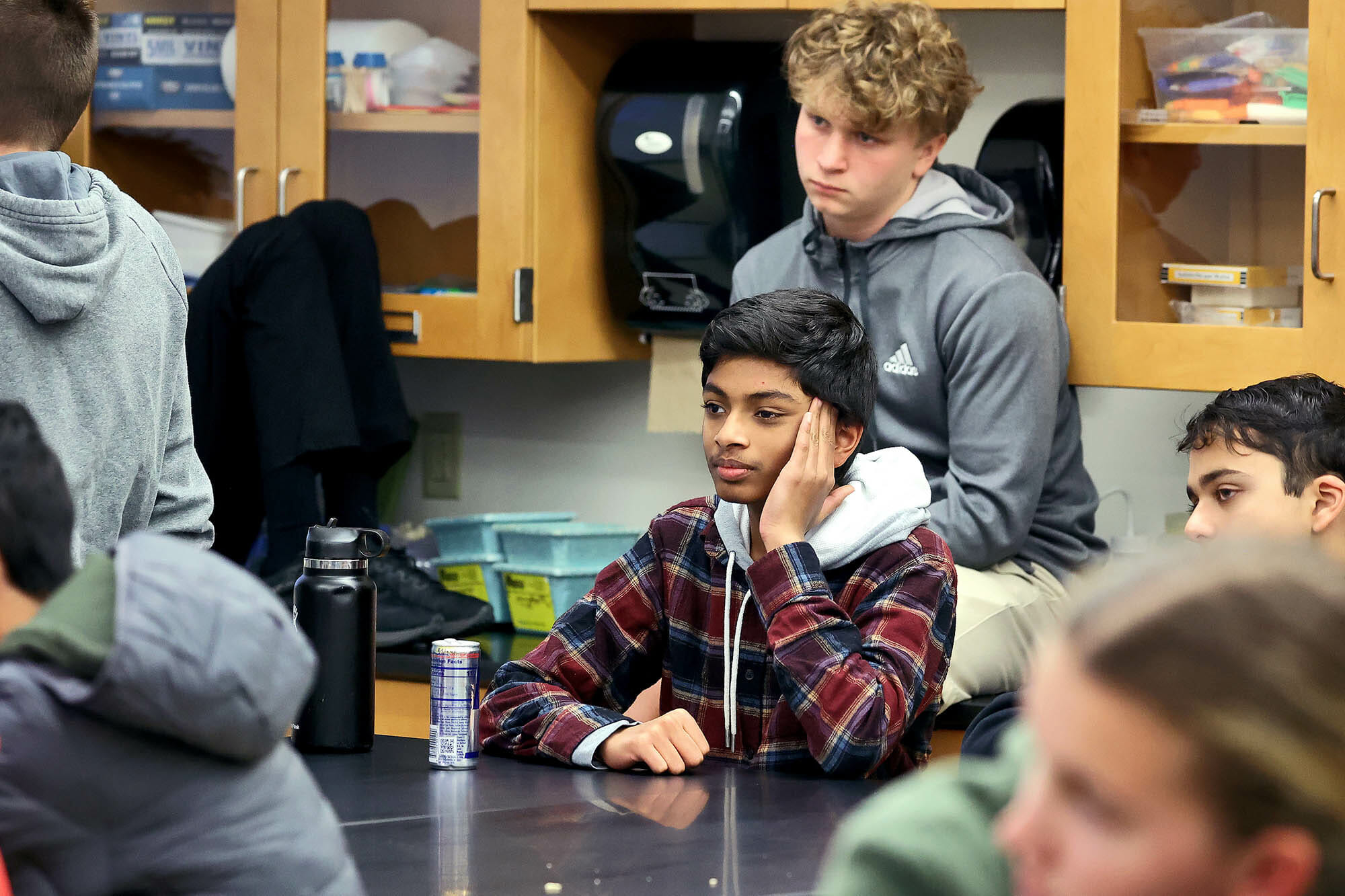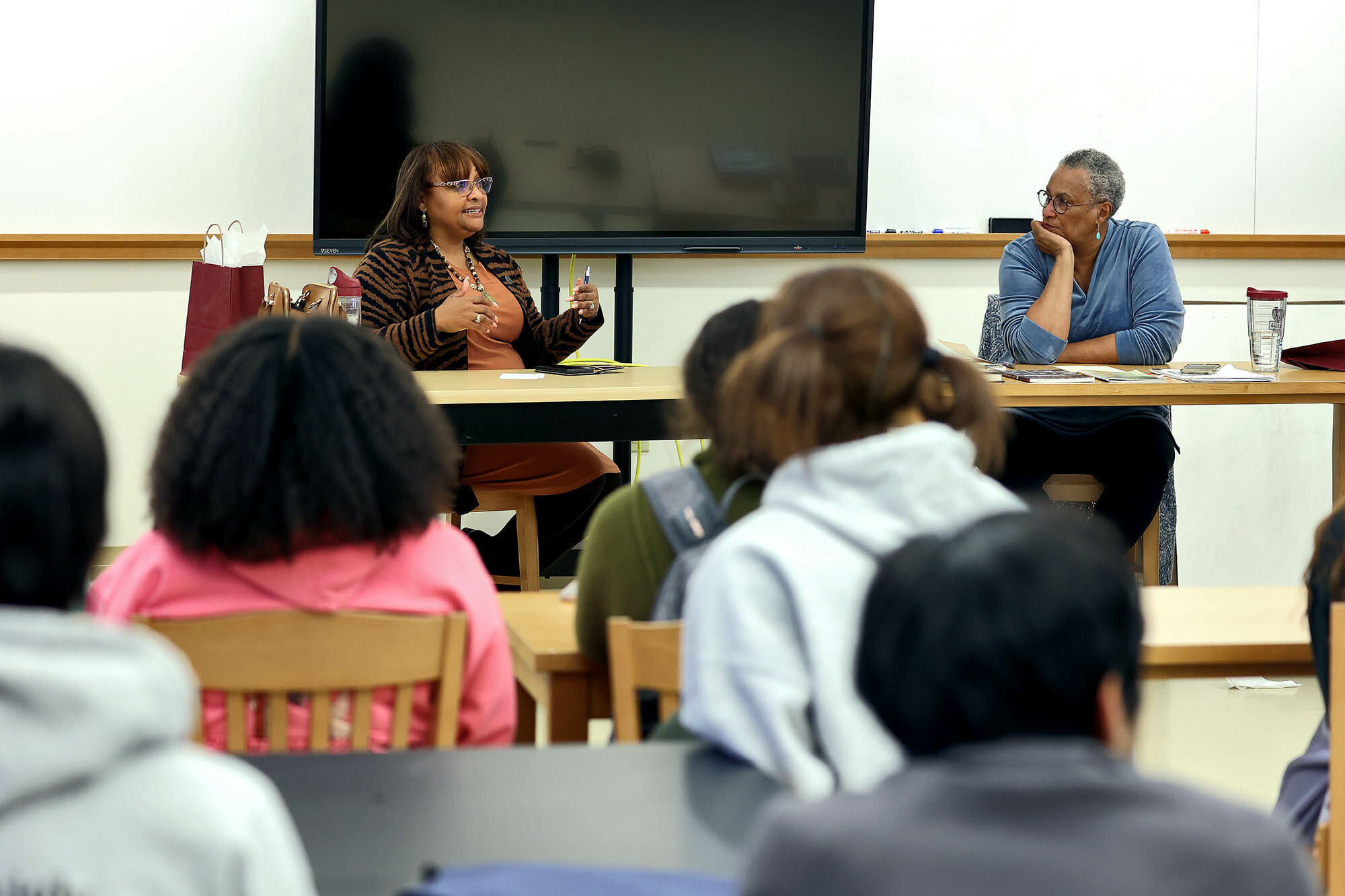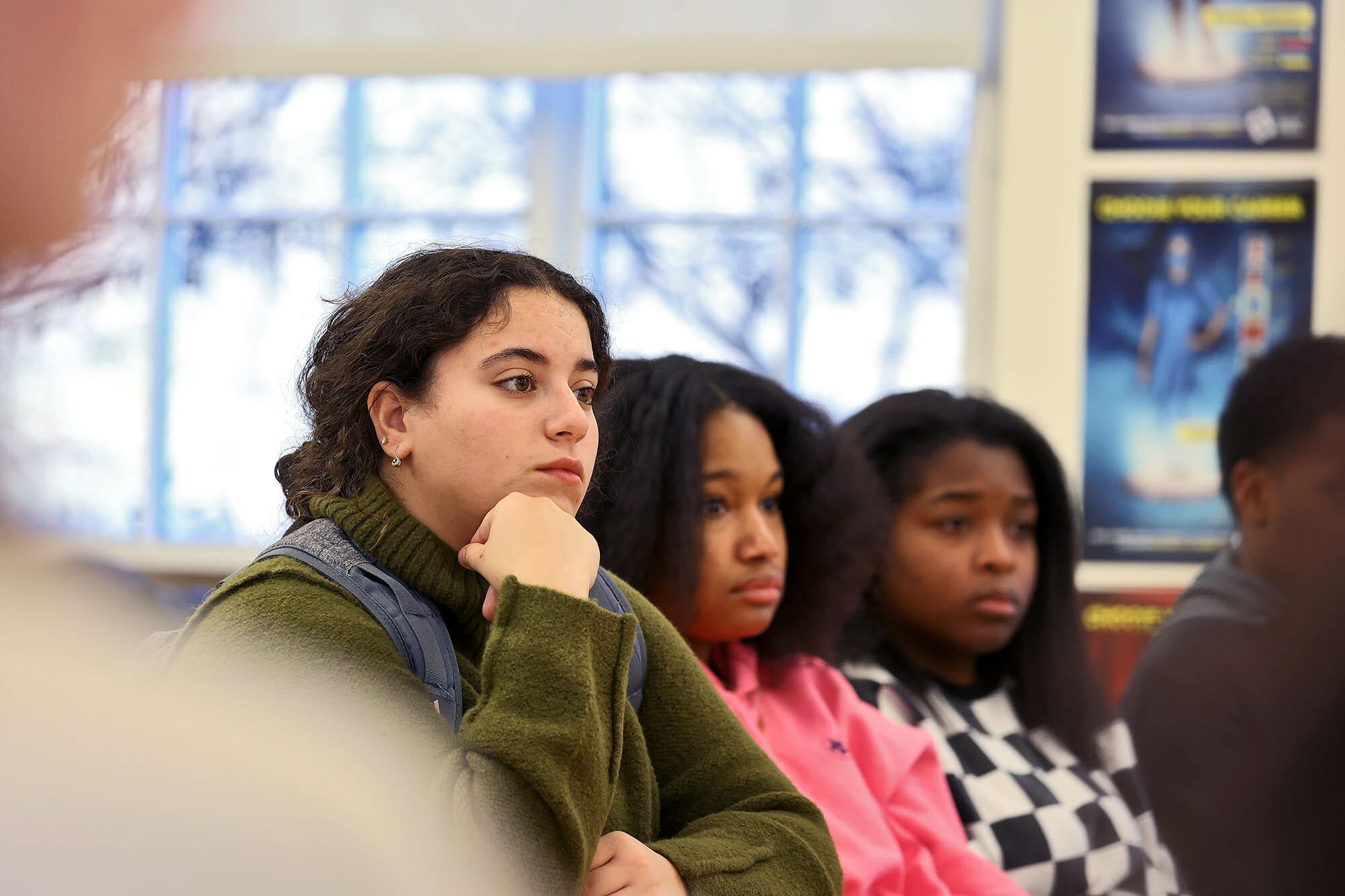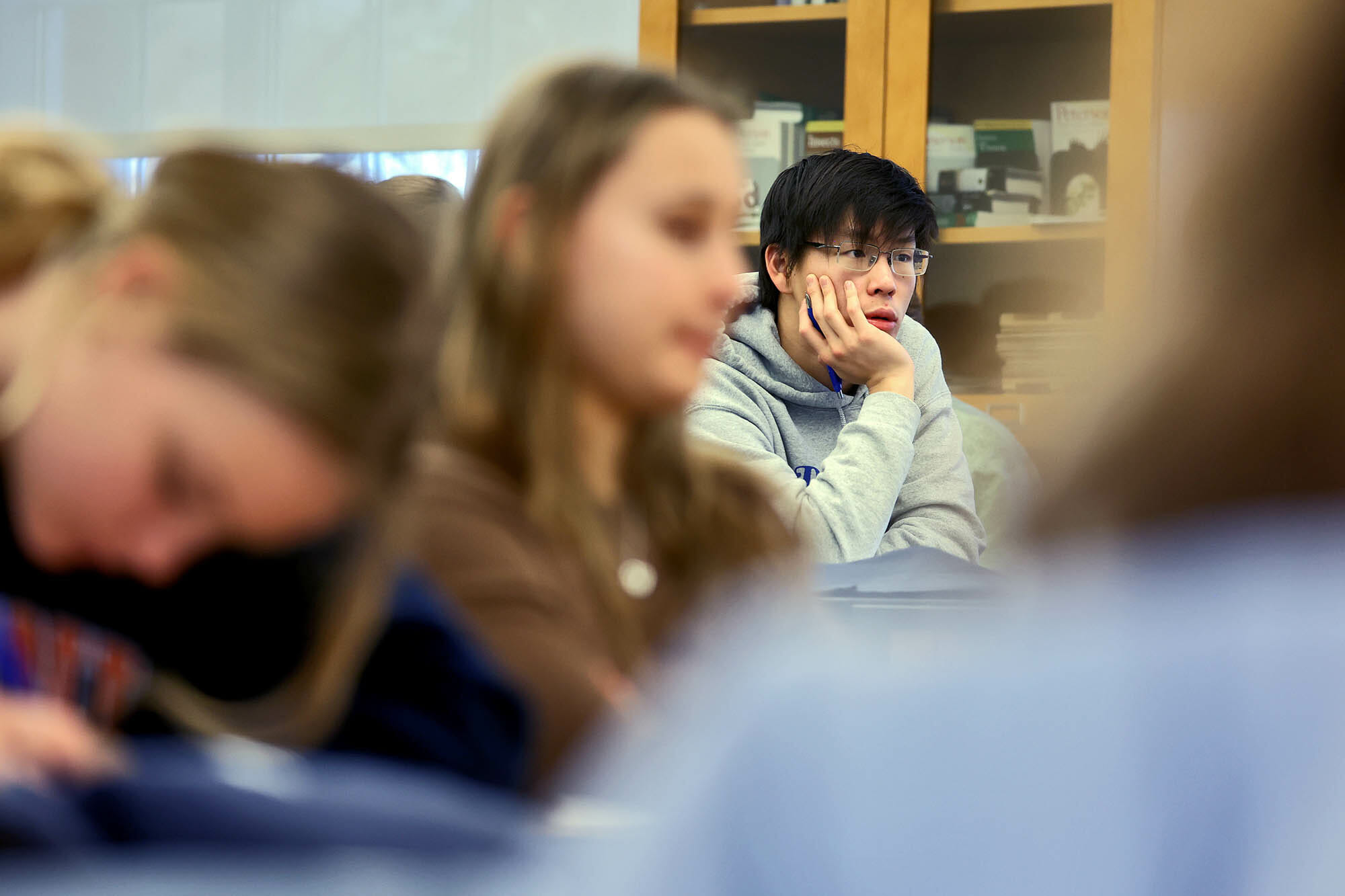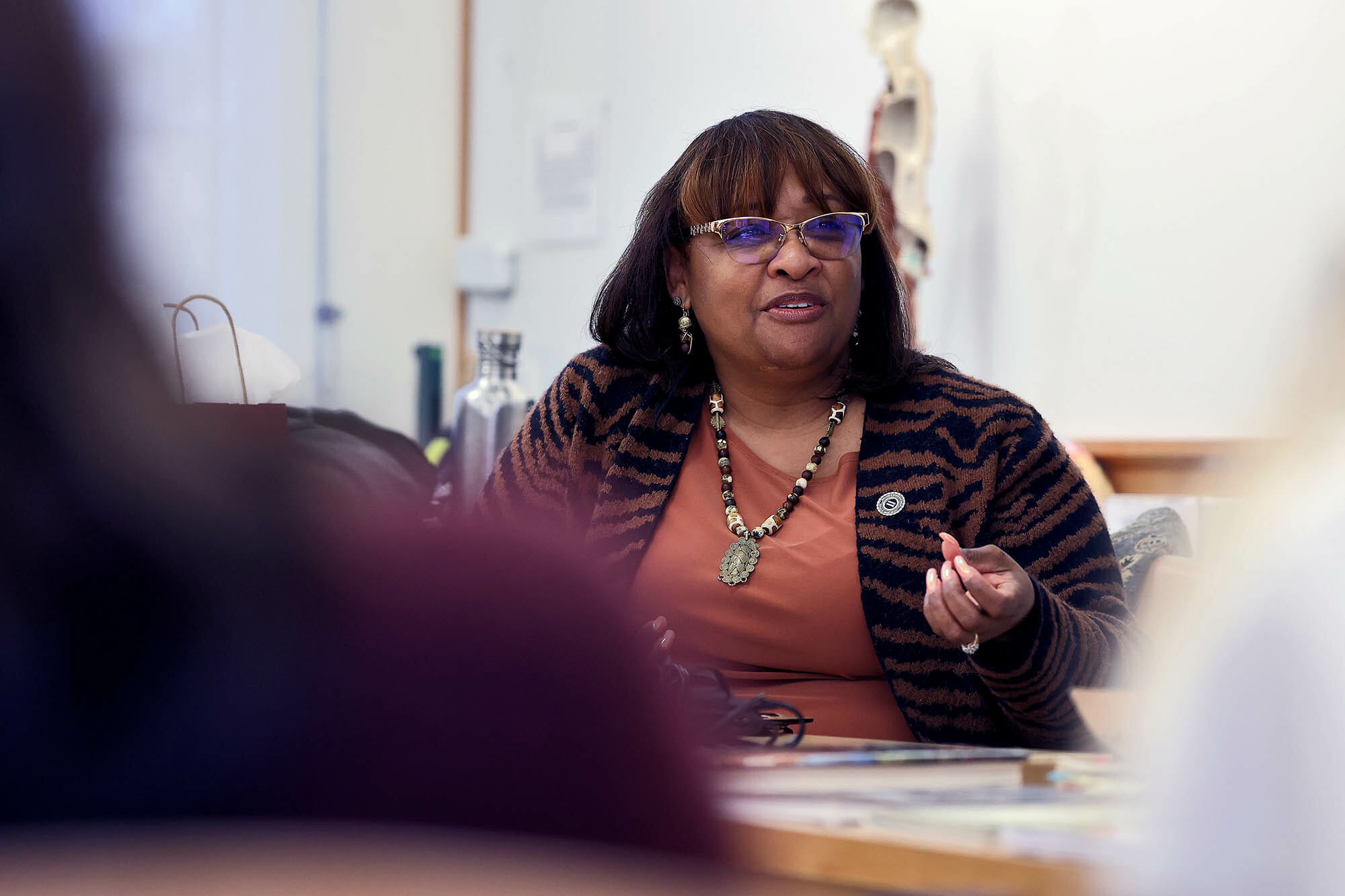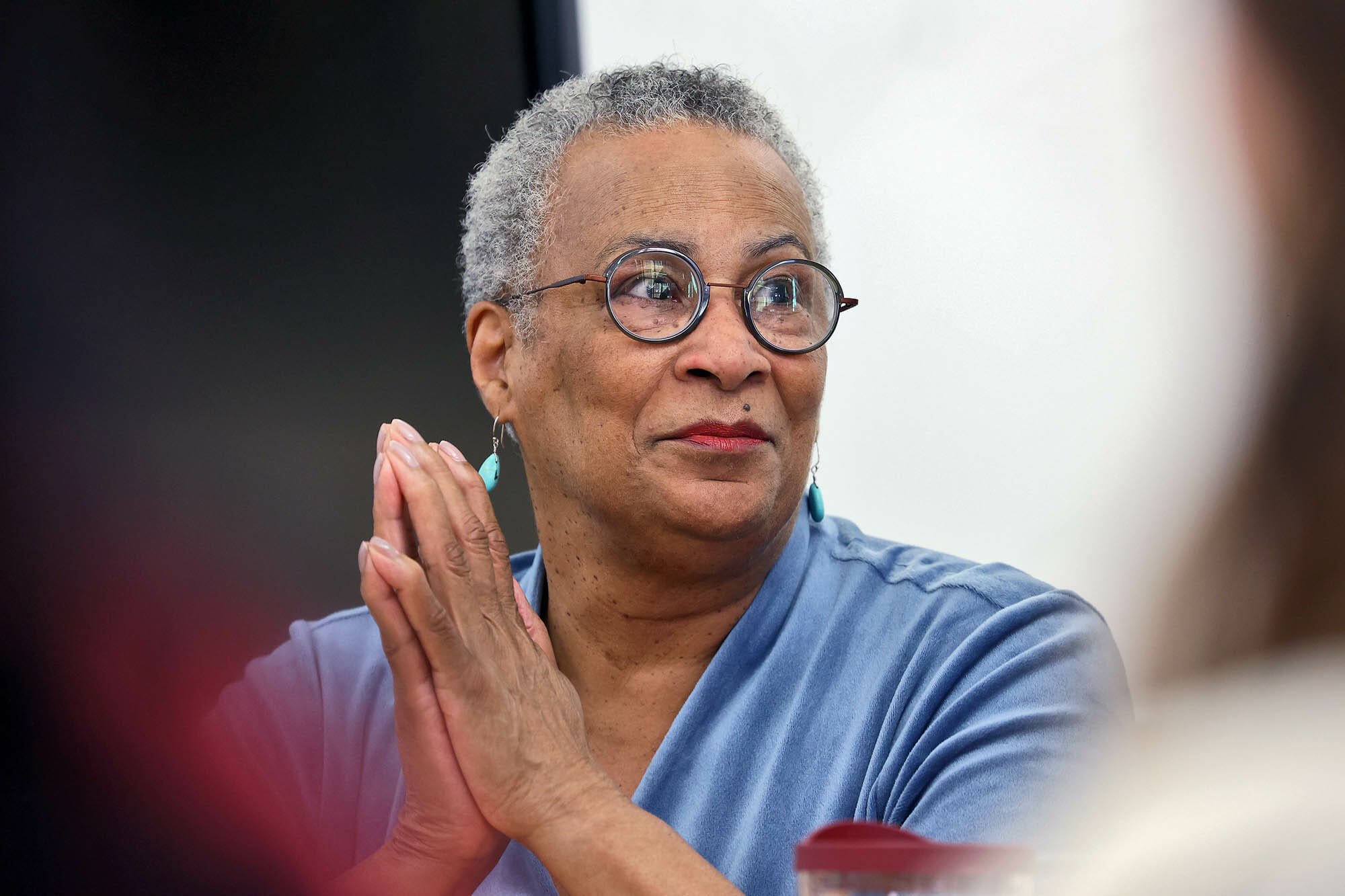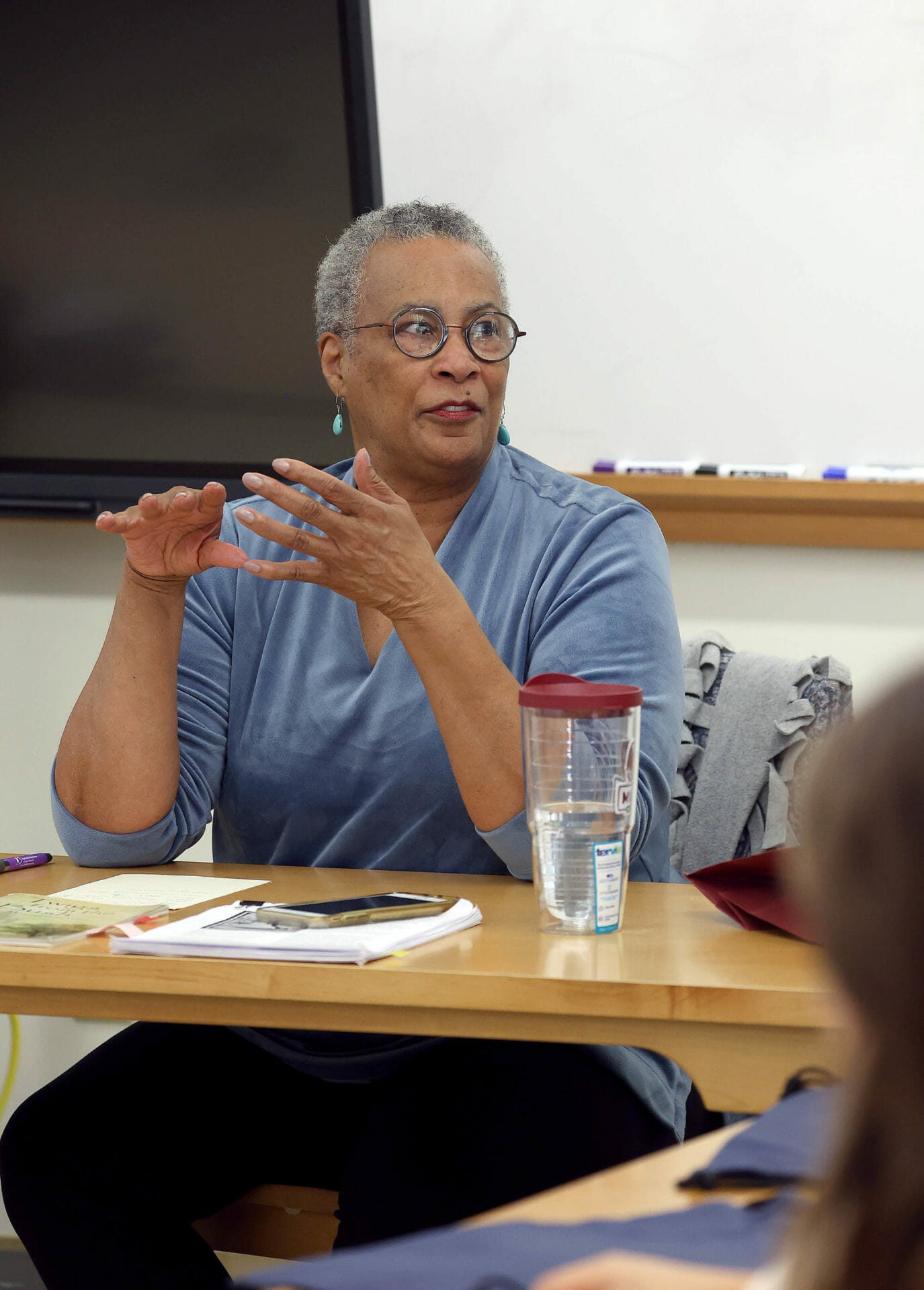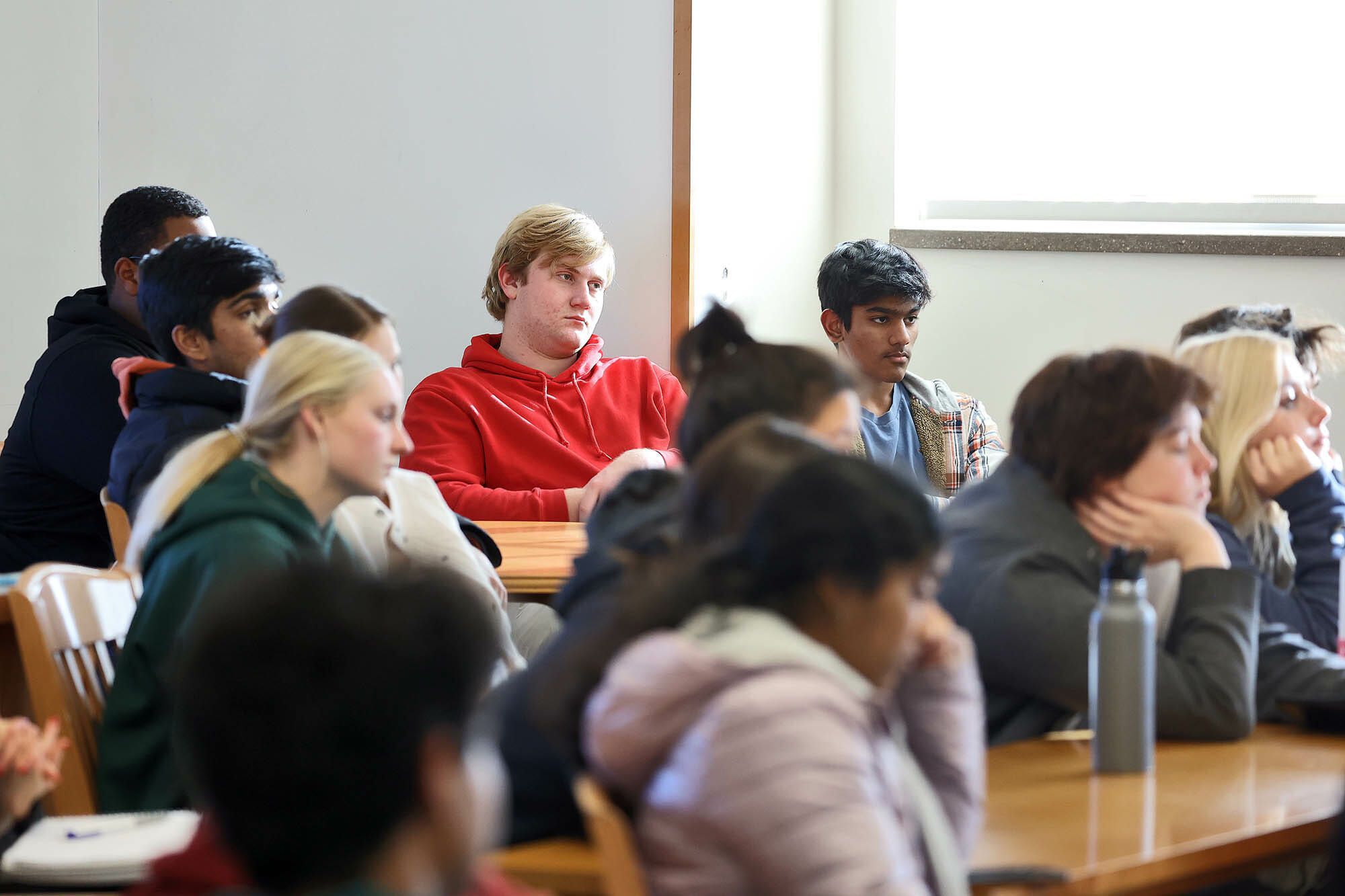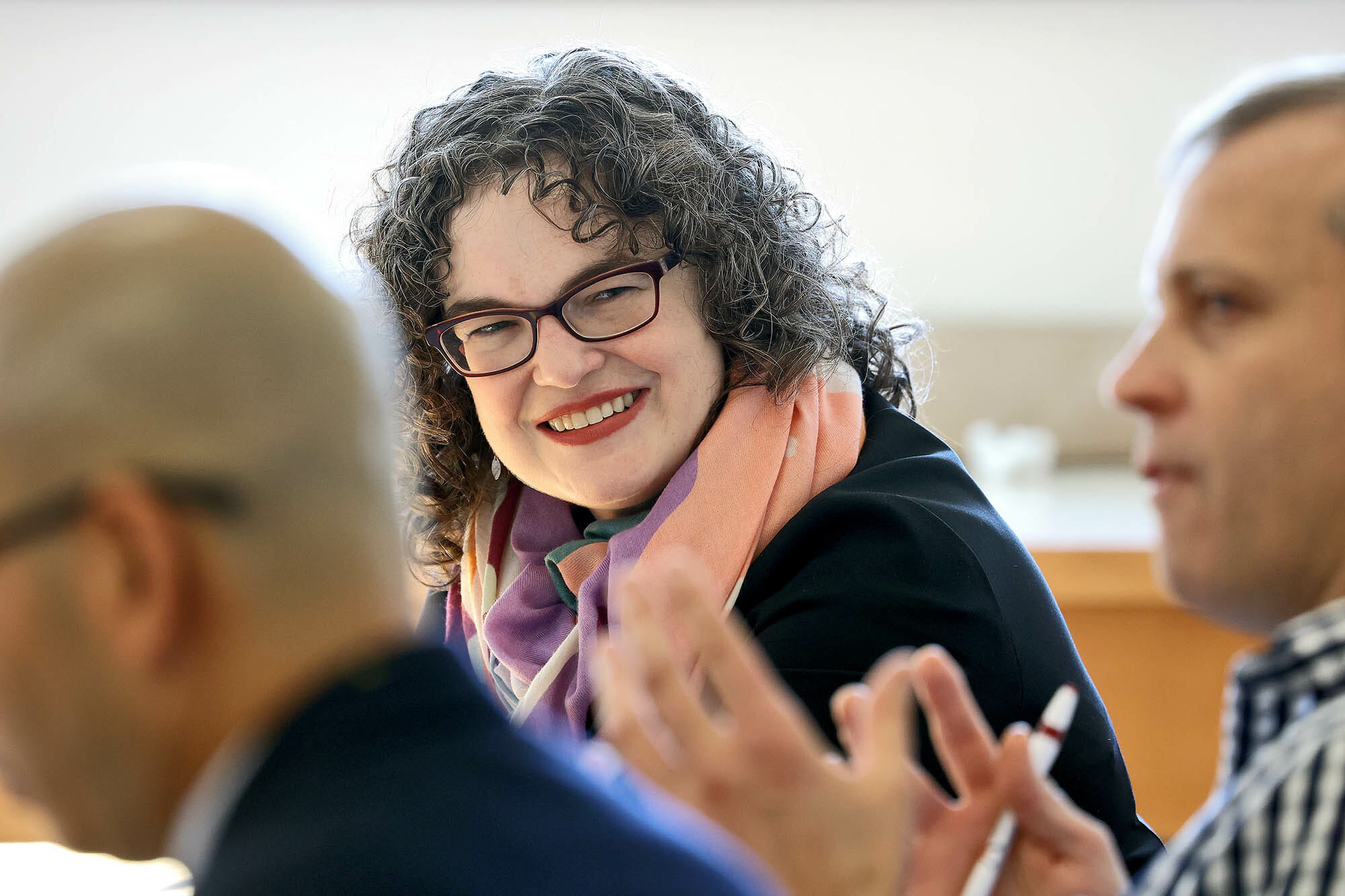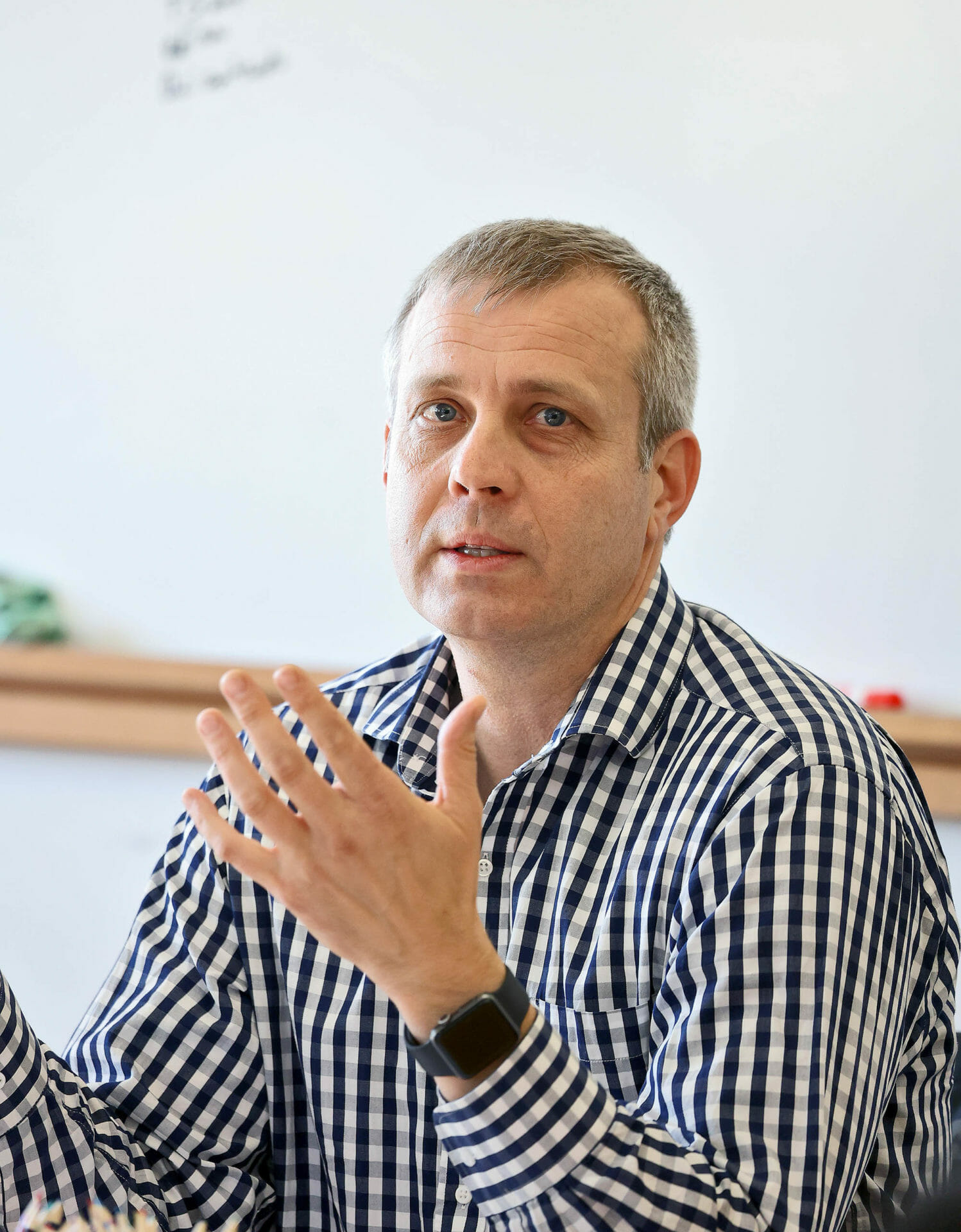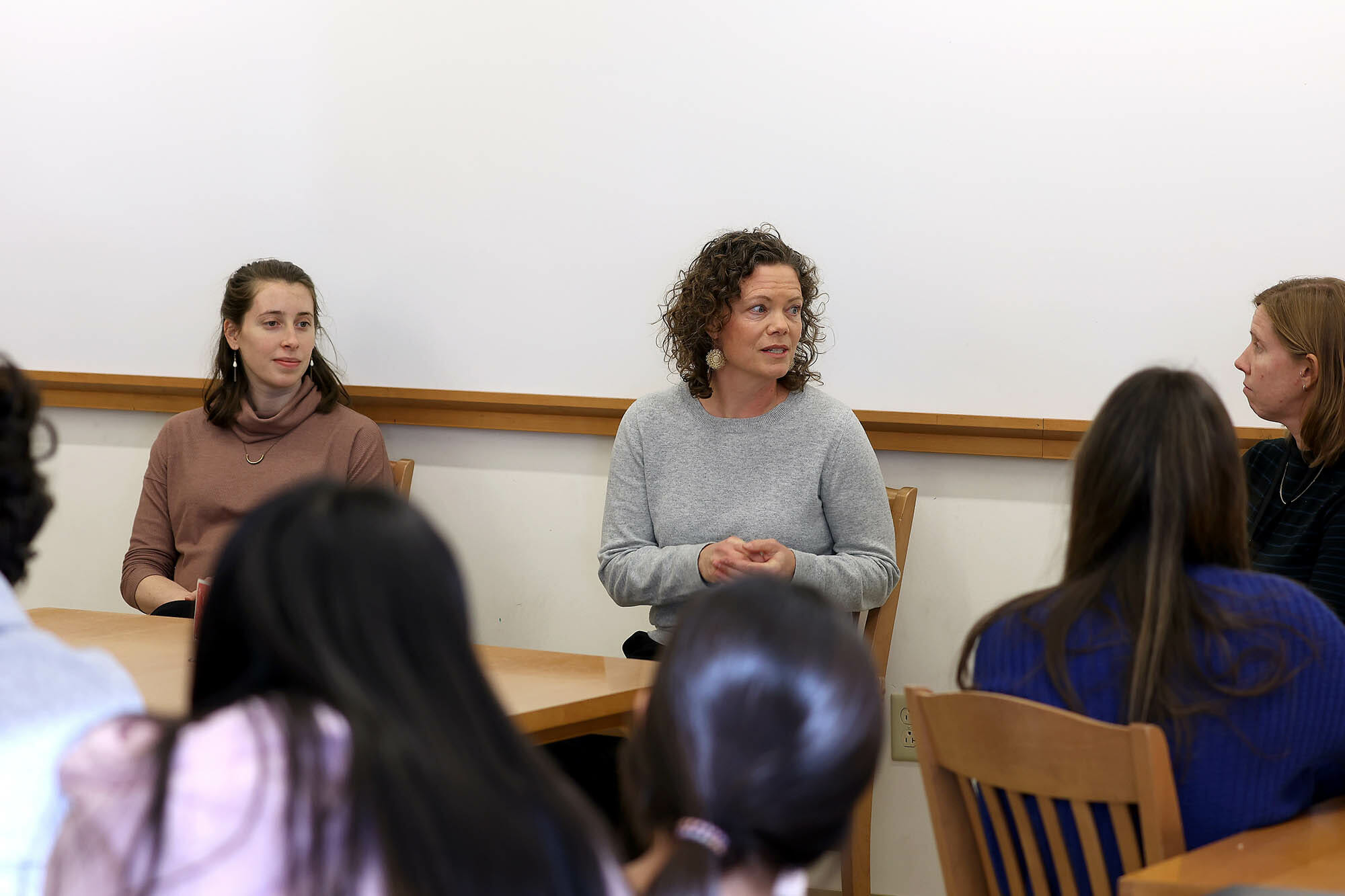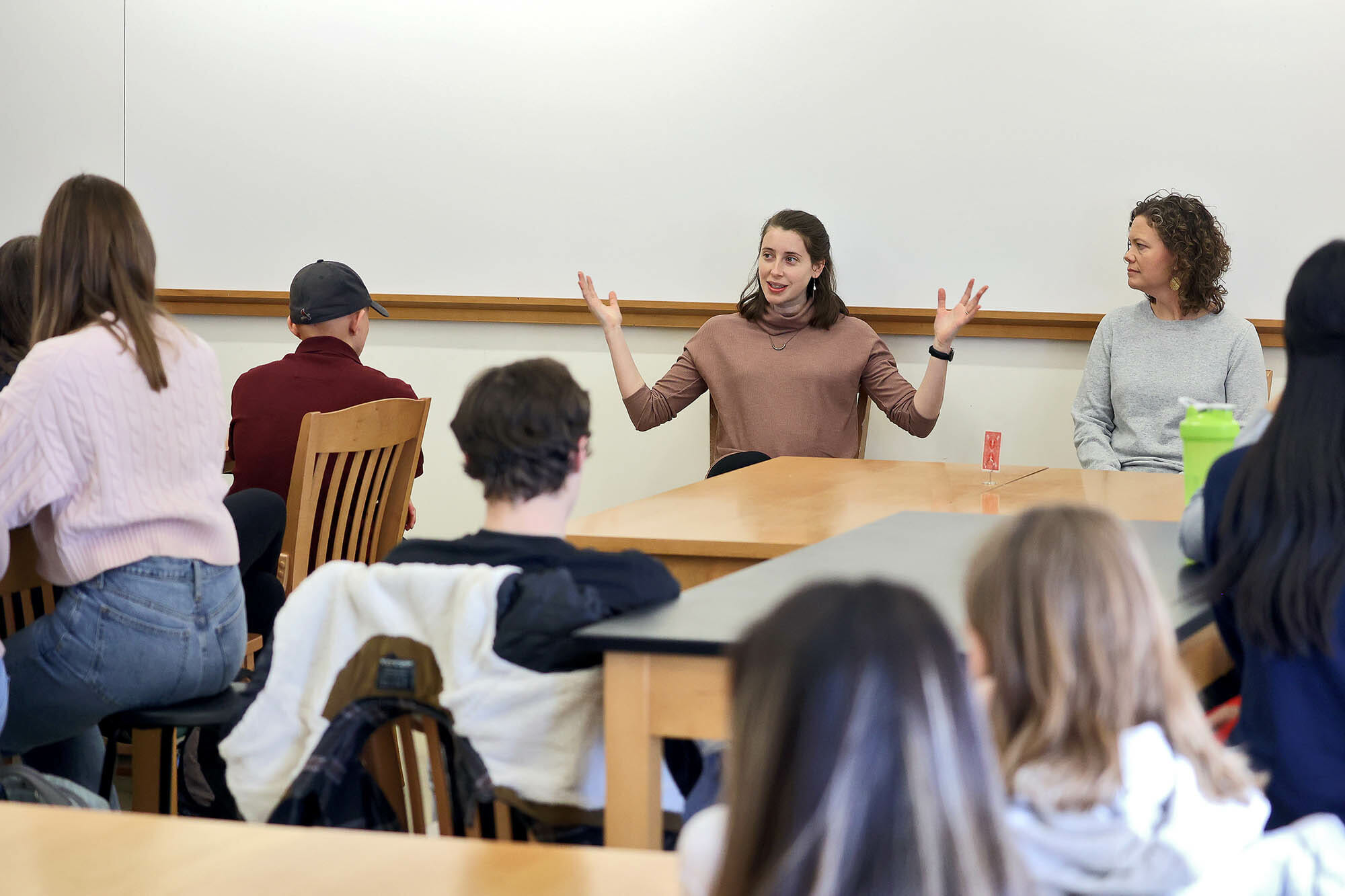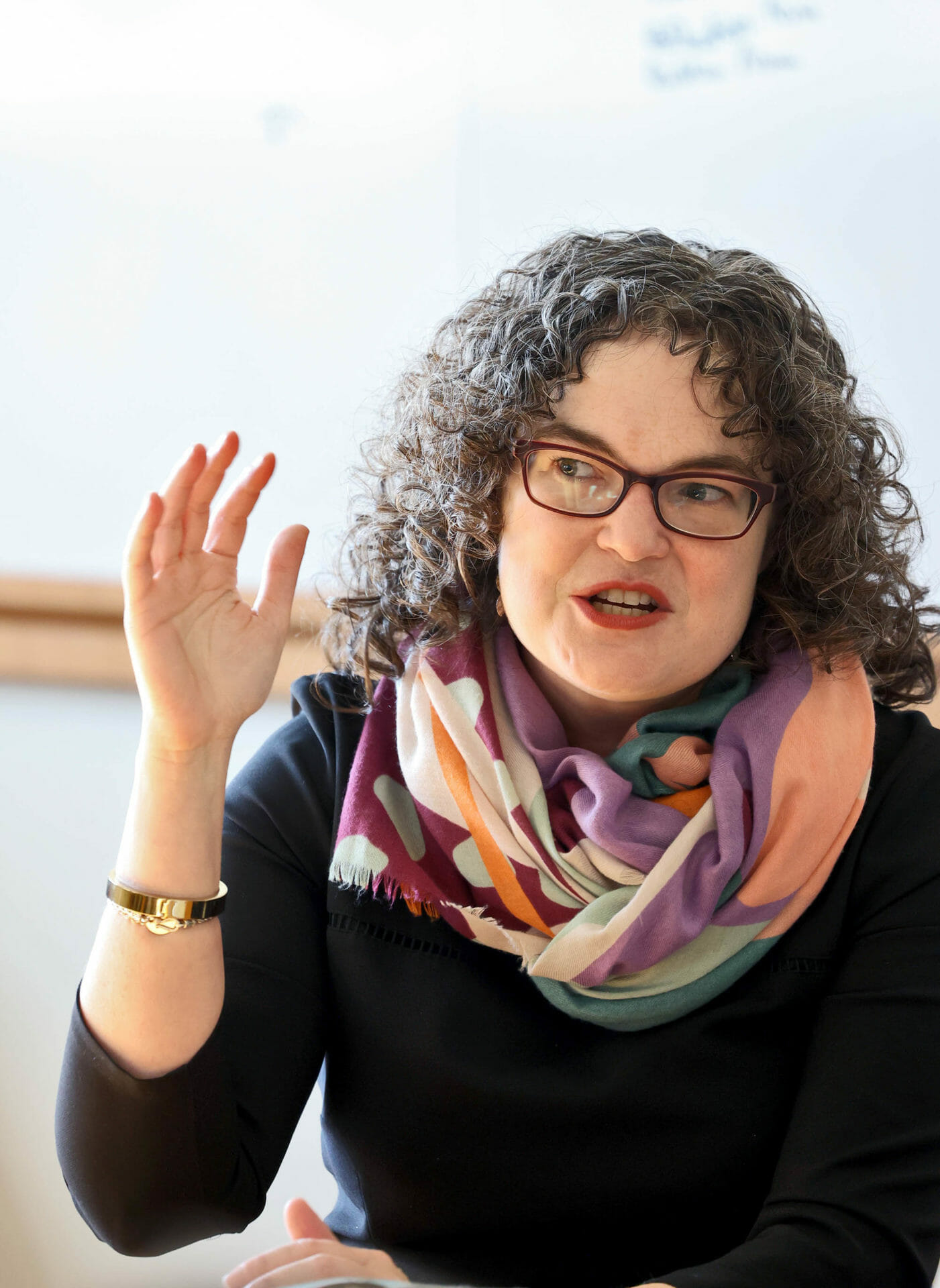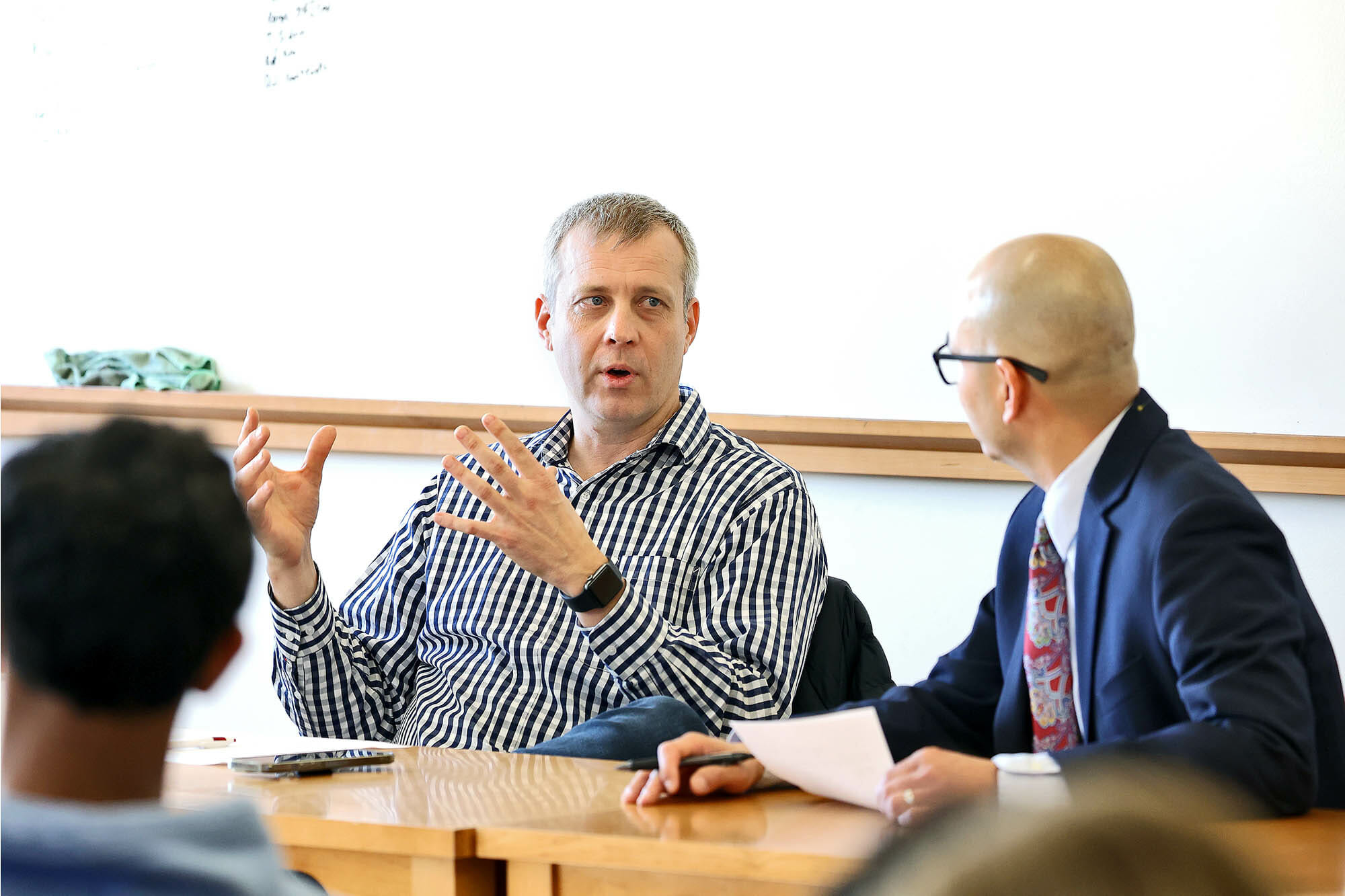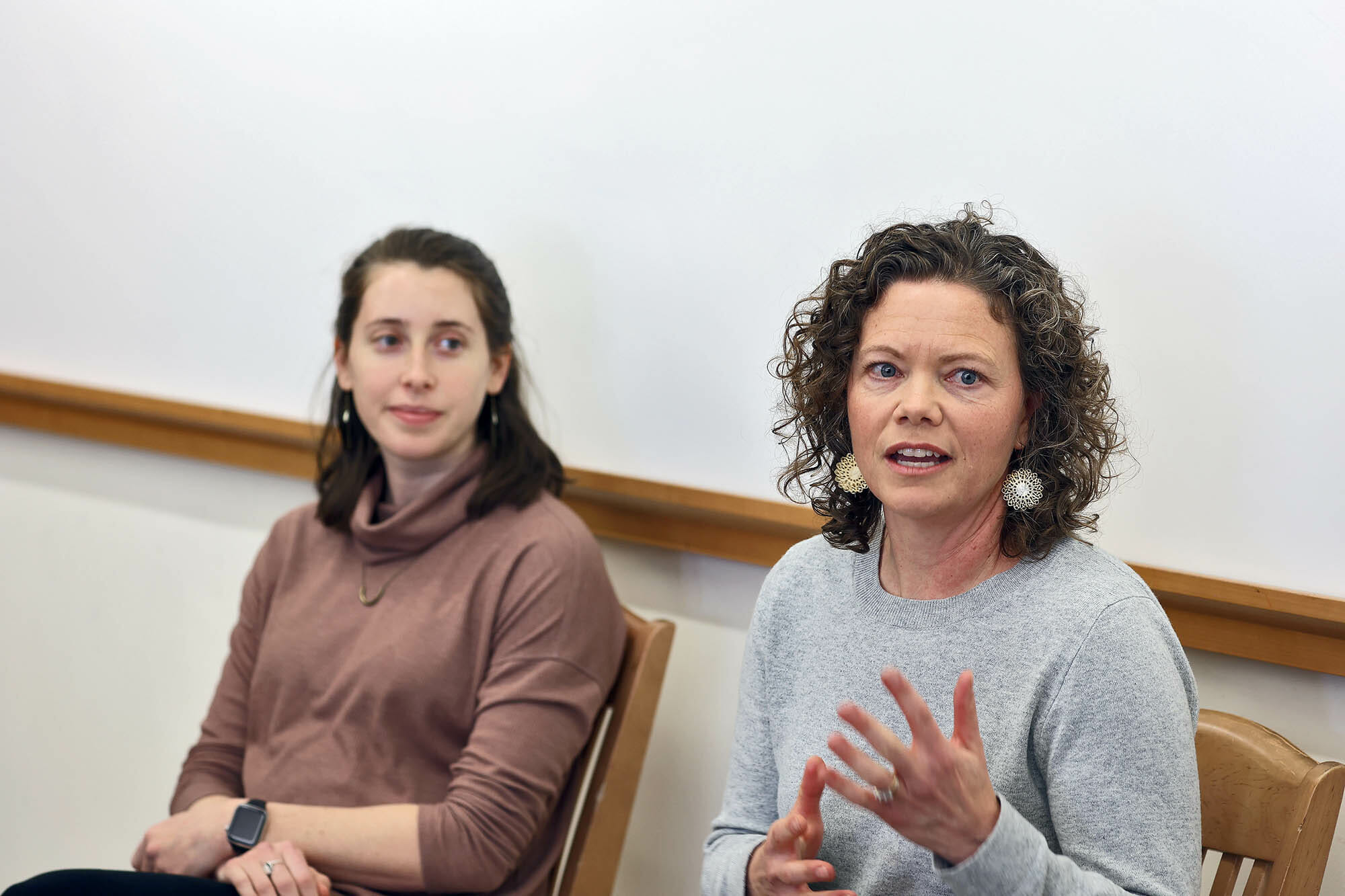Students in the History of St. Louis class enjoyed the opportunity to choose their own adventure for their last round of guest speakers. The semester-long course exposed students to various panelists and speakers with broad expertise in St. Louis politics, business, government, and culture. For the final experience, the History of St. Louis teaching team designed mini-panels consisting of two or three experts with smaller groups of 35-40 students.
Carla Federman, JK-12 History Department Chair, said, « For this last opportunity to hear from individuals within the community, we wanted to offer students a choice that allows them to investigate topics we’ve been looking at all year and that are essential to our study of urban areas. We wanted to expose students to a variety of people who work as social workers, lawyers, business developers, and for major cultural institutions so they can learn directly from people who live and work in the community. »
Juniors had four different topics (for a total of nine speakers) from which to choose. The goal of the smaller groups was to bring the larger topics into sharper focus, helping students understand what the average person is doing to improve their community and how students can develop the agency to make their community a better place. The History of St. Louis teaching team assisted each group with moderation and question starters, then turned it over to the students to continue the dialogue and interaction.
History Teacher Elizabeth Wells was excited by the potential of the small group settings. She said, « These speakers represent more daily-life social and cultural pieces than what we’ve done so far. The overall intention of this last speaker series is to really infuse it with personal human stories. And, smaller groups will lead to more discussion and student involvement in asking questions. »
The housing panel, moderated by History Teacher Alexander Rolnick, included guests Michael Allen from Washington University, Paula Carey-Moore from the Urban League, and Vivian Gibson from Mill Creek Valley. « Vivian Gibson spoke about the personal impact of housing as she discussed her experience growing up in Mill Creek Valley, while Paula Carey-Moore helped students understand the professional side of providing housing for marginalized communities. Together, they helped connect ideas and content we cover in class to real-world experiences, » said Rolnick.
Madison Sineff ’24 shared, « It was interesting to learn first-hand about the current housing issues from someone who was a resident in Mill Creek herself before it was demolished and lived through the devastating experiences and discrimination we have been learning about in class. The panelists also offered more insight specifically on St. Louis’s history with housing projects, most notably Pruitt Igoe, and how the negative image created around public housing by the city is still impacting their effectiveness today. Finally, something that really stood out to me was their advice: that even though there are still companies like St. Louis Realtors who have apologized for discrimination in the past, as well as the state and federal laws that are now in place, true recovery from decades worth of racial restriction can only be attained through the general population’s willingness to improve the climate of real estate and housing. »
Ava Moore ’24 enjoyed learning about housing in St. Louis. She said, « It was amazing to hear first-hand how housing has impacted a minority, but also from a woman working in the realty industry. What surprised me the most was their comments about public housing and how we saw this decline through projects such as Pruitt-Igoe. I was interested in hearing how they believed that public housing is currently on the forefront and that there is some potential to see better and more well-organized projects run by the government in the near future. »
History Teacher Jason Asher moderated the education panel with guests John Pimmel from the Little Bit Foundation and Julius B. Anthony from the St. Louis Regional Literacy Association. « Julius B. Anthony and John Pimmel spoke of how ‘the system works how the system was intended to work’ to help explain that the educational disparities we see today are the products of systemic design. Further that these systems are not designed for those outside of ‘mainstream’ white, middle-class society leaving behind millions of children in poor communities and communities of color from the basic human right of learning, and that that is largely a product of widespread illiteracy (72% of Black students in the St. Louis area read below grade level by the third grade). Further still, they emphasized the staggering correlation between illiteracy and school dropout rates, employment opportunities, and more that serve as a harbinger for the perpetuation of these issues across generations that will continue to hold back progress in the St. Louis region, » he said.
Students who attended the education panel appreciated the insight into statistics for literacy and educational access. « I’ve done volunteer work for the Little Bit Foundation, so I liked hearing more about their different outreach programs. I asked how they have been fighting education inequality legally, and I learned that they need to garner more public support before they could create legislation, » said Virginia Portell ’24.
Devon Catsavis ’24 was impacted by how crucial literacy is to a person’s life. She said, « I was surprised to learn how many African American students in St. Louis City don’t pass their third-grade reading test. Although this fact was very disheartening, I was encouraged by all the work the speakers are doing to enhance the St. Louis education system from the inside rather than solely waiting on policies that may not have as much of an effect on individual students. I think education is easy to take for granted because of all the amazing teachers and opportunities we have at MICDS. This speaker session helped increase my awareness about the inequities in St. Louis education and what we can do to help. »
Jaida Smith ’24 found the panel inspiring. She said, « The two leaders fighting for change in the education system presented numerous relevant statistics and facts regarding unequal access to quality education based on racial and gender-associating factors. As we were presented with these statistics, we began to associate them with the value they hold towards the lives of others living in the St. Louis area who weren’t as fortunately granted the same opportunities and offered the necessary resources to succeed in school. This is the exact mission that both the Little Bit Foundation and the St. Louis Regional Literacy Association are dedicated to: inspiring change and breaking down barriers presented to children living in disparity amongst the education system so that they too can be successful. »
The population and immigration panel included guests Lindsay Spencer of Welcome Neighbor and Haley Millner, an immigration attorney. Abby Wyckoff ’24 said, « It was really interesting to learn about the immigration here in St. Louis. I had never really understood how big of a city St. Louis was in terms of accepting and housing immigrants throughout the region. It’s cool to see how much our community is willing to help others. »
The culture panel included one of our alums, Amy Torbert ’01 of the St. Louis Art Museum, and Will Lieberman representing Cherokee Street. Cora Bryan ’24 enjoyed hearing about St. Louis culture. She said, « During this panel, I found the advice they gave about career paths very helpful, and I was interested to hear about the new local focus of the St. Louis Art Museum. » Mia Krieger ’24 found the backgrounds of the panelists interesting. « Both of them are very successful in what they do, and it was great to hear from them and their perspectives of St. Louis. We learned that the St. Louis Art Museum is actually funded by property taxes, and I found that really interesting because I didn’t know that before the panel, » she said.
Wells added, « The mini-panels provided a nice segue to the final project for the class, which is a mini-simulation. Students will work in small groups and pretend they are city council members with access to the funds St. Louis received from COVID relief and NFL revenue. They will have to debate and plan how to allocate those funds to government programs and community organizations, create solutions, and fix challenges. They will battle it out within their own council, present proposals to the larger class, and battle it out among all the groups for the final funding allocations. The information gained from the panelists will help inform their decisions. »
